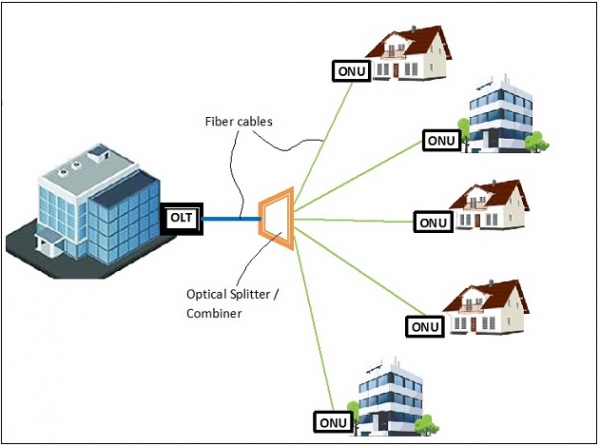
 Data Structure
Data Structure Networking
Networking RDBMS
RDBMS Operating System
Operating System Java
Java MS Excel
MS Excel iOS
iOS HTML
HTML CSS
CSS Android
Android Python
Python C Programming
C Programming C++
C++ C#
C# MongoDB
MongoDB MySQL
MySQL Javascript
Javascript PHP
PHP
- Selected Reading
- UPSC IAS Exams Notes
- Developer's Best Practices
- Questions and Answers
- Effective Resume Writing
- HR Interview Questions
- Computer Glossary
- Who is Who
Passive Optical Network
Definition
Passive Optical Network (PON) is a FTTH (Fiber to the Home) technology deployed in both domestic and commercial consumers. It is called a passive network since it does not require a power equipment to amplify or process signals. A PON implements point – to – multipoint architecture, where a single optical line is divided into many optical splitters to serve multiple customers. It is used in the last mile of the network connection between an ISP and a user.
Architecture
The passive optical network has three parts −
Optical Line Terminator (OLT) − This is the end office of the service provider.
Optical Distribution Network (ODN) − This contains the fibers and splitters, enabling point – to – multipoint connection.
Optical Network Unit (ONU) − This terminates the PON and provides services for interface with the customer.

Data Transmission
Data transmission in a PON is a two way traffic −
Upstream data transmission − This transmission is from the customer to the ISP. Here, optical combiners combine customer data is into a single signal, through time division multiplexing (TDM).
Downstream data transmission − This transmission is from the ISP to the customer. Optical splitters divide the signals and broadcast them to all the premises. Encryption and authentication measures at the customer end determine who can access the data in the transmitted signal.
Types of PONs
The common kinds of PONs are −
GPONs (Gigabit-capable PONs)
EPONs (Ethernet PONs)
BPONs (Broadband PONs)
APON (Asynchronous Transfer Mode PONs)

